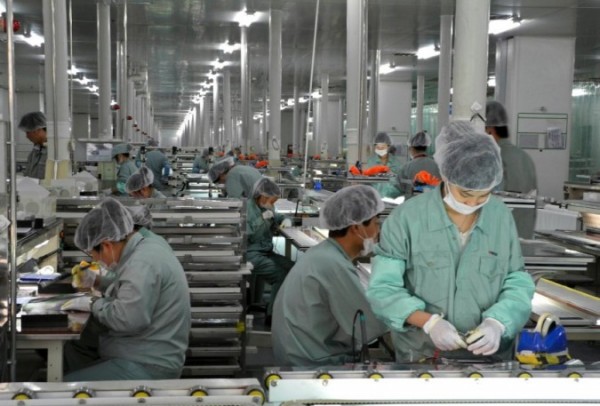
Photo: Reuters
The struggle for positioning in the solar energy marketplace took another turn.
On June 4 Karel de Gucht, the European Commissioner for Trade, announced a new 11.8 percent tariff to be applied to imported Chinese made solar panels, and photovoltaic cells and polysilicon wafers, two system components. To avoid an additional increase escalating to 47.6 percent, negotiations with the Chinese exporters need to reach a mutually agreed outcome by August 6. The most important requirement to be negotiated is a commitment from the Chinese exporters to accept a minimum price to avoid “dumping” (selling below market value) charges.
If the agreement is not reached by December, the tariffs can extend for an additional five years. The extended tariffs would require approval of the European Parliament’s council of ministers. Now, Mr. de Gucht, as Commissioner for Trade, has authority to implement the temporary measures.
The decision to impose the tariffs was made after the European Commission finished its investigation stemming from a July 2012 complaint from EU Pro Sun, a trade association of European solar panel manufacturers. The group provided evidence claiming that exporting producers from China are dumping solar panels and components into the EU and, as a result, making it financially unsound to sustain operations. With imports from China totaling 21 billion euros (27.4 billion USD) in 2011 and 11.5 billion euro (15.2 billion USD) in 2012, this was one of the largest investigations conducted by the E.C.
Mr. de Gucht asserted, “Our action today (June 4) is an emergency measure to give life-saving oxygen to a business sector in Europe that is suffering badly from this dumping…our response is balanced, legal and justified within international trade rules and designed to prevent the situation from turning fatal.”
The quantified results from the investigation are quite stunning. It was concluded that dumping margins were up to 112.6 percent, resulting in injury margins to the EU industry of up to 67.9 percent, which are seen as stimulants to bankruptcies and insolvencies among the European nations. More starkly, the panels are sold 88 percent below fair market value in Europe.
The investigation also concluded that without an attempt to level the playing field, 25,000 jobs in the EU would be at risk, as continued financial struggles would confront domestic producers.
Interestingly, 18 of the EU’s 27 member states oppose implementation of the new tariff. Important economic divers, Germany and Britain, lead the opposition. German Chancellor Angela Merkel publicly called to stop the tariffs and to resolve the matter diplomatically. There is the fear that stimulating new tensions may spark a trade war, which would force the European Union into an untenable situation as unemployment is floundering with more than 26 million citizens searching for work.
It is hard to overlook the overall trade picture between the two major economic entities and not wanting to jeopardize the strong bond. In 2012, in sum the EU imported goods from China worth 289.7 billion euros (383 billion USD), while the E.U. exports 143.8 billion euros (190 billion USD) to China. Bilateral trade in goods between the EU and China exceeds 1 billion euros (1.32 billion USD) per day. In perspective, solar panels represent more than six percent of China’s exports to the 27 country group, making them one of the largest Chinese exports.
Not surprisingly, China opposes what it labels trade protectionism and the abuse of trade relief measures, according to a news report from China. The same report quoted Premier Li Keqiang as saying the country will uphold its interests. The Premier desires the row be avoided through the negotiations.
China has taken what is labels unrelated action. China’s Ministry of Commerce is investigating an anti-subsidy and anti-dumping of European wine – while denying the measure is an act of retaliation for the solar levies. “We believe there is not dumping of European wines on the Chinese market,” said a spokesman for the European Commission, Roger Waite. Most of China’s dramatically increasing imports of European wine are from countries that support the solar tariffs – France, Spain, and Italy. Germany is also an exporter, but did not support the tariffs, but it would still suffer commercial impact.
These countries are in a bind since Chinese officials have considerable discretion in issuing factory permits, export licenses and even visas for foreign executives for other industries, resulting in European businesses seeking to avoid supporting actions that could stoke trade tensions.
While saying that, China’s solar industry has grown at breakneck speed since 2006. Its footprint is quite expansive as Chinese production capacity was over 55 gigawatt (GW), representing around 150 percent of global demand in 2012. The 27 GW of excess production capacity is almost double the entire EU demand. Moreover, Chinese imports to the EU represent over 80 percent of the EU’s solar panel market – clearly presenting challenging market conditions. However, the financial challenge is no longer isolated to the EU. The over production forced Chinese based Suntech Power to file for bankruptcy in March.
As demonstrated above, the development of the European solar marketplace continues to be trying, even as solar energy demand continues becomes more prevalent. Renewable energy, including wind, geothermal, biomass, etc., targets that have been set in the EU will further push solar to new heights, but for European companies to benefit, the trade row needs a tension free outcome leading to a level playing field.